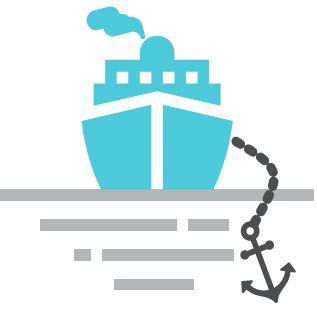Welcome to the website where you can pass online the CES CBT CD-4102 test on the subject «Tank Cleaning 2, Principles of Tank Cleaning». Practice like this will help you as a marine specialist improve your knowledge with the help of online studying and appraisal practice. CES based on practical information and marine specialists experience.
CES tests developed for evaluating seaman basic knowledge by Seagull Company (rebranded as «OTG»), is an evaluating online-tool, used for revealing any professional preparation needed in specific fields of knowledge, defined by STCW.
CES tests have proven themselves as good tools for the selection and recruitment process, as well as advancing the level of knowledge of the current officers and crew. Ocean Technologies Group use various subjects for question creation, which includes:
- Crowd and Crisis Management;
- Integrated Navigation System (INS);
- Ballast water management;
- Handling and Stowage;
- Vessel operation management and safety;
- Marine engineering;
- Maintenance and repair, etc.
Current test contains Seagull CES questions on the subject «Tank Cleaning 2, Principles of Tank Cleaning». Those questions can be used for competence verification specialist capable of preventing accidental situations related with transporting safety, or also for self-examination.
«Tank Cleaning 2, Principles of Tank Cleaning» subject includes theoretical and practical information about advanced training for work on any type of vessel. This training delves into the intricate processes and safety protocols necessary for effective tank cleaning operations. The curriculum covers a range of topics, from understanding the chemical properties of various cleaning agents to the practical applications of these agents in real-world scenarios. One of the core components is the study of the chemical reactions that occur during the cleaning process, which is essential for ensuring the efficiency and safety of the operation. Additionally, the training includes detailed instructions on how to handle different types of contaminants and the best practices for removing them without damaging the vessel’s structure. The importance of adhering to environmental regulations and safety standards is also a focal point, emphasizing the need for responsible and sustainable tank cleaning practices. Furthermore, the training provides insights into the latest technological advancements and tools used in the industry, preparing trainees for the challenges of modern maritime operations. Successful completion of test equips individuals with the expertise needed to manage and execute complex tank cleaning operations effectively and responsibly on any type of vessel.
On this site Crew Evaluation System Test on the subject «Tank Cleaning 2, Principles of Tank Cleaning» contains 12 questions you need to answer with no possibility to go back to previous question. Therefore, we recommend carefully reading each question and making decision with no hurry. In case you have some difficulty answering, you have also possibility to request a hint.
Choose the regime, in which you want to pass CES test:

Use the search below to find question.
Amount of questions: 12.
Right answers marked with this sign .
